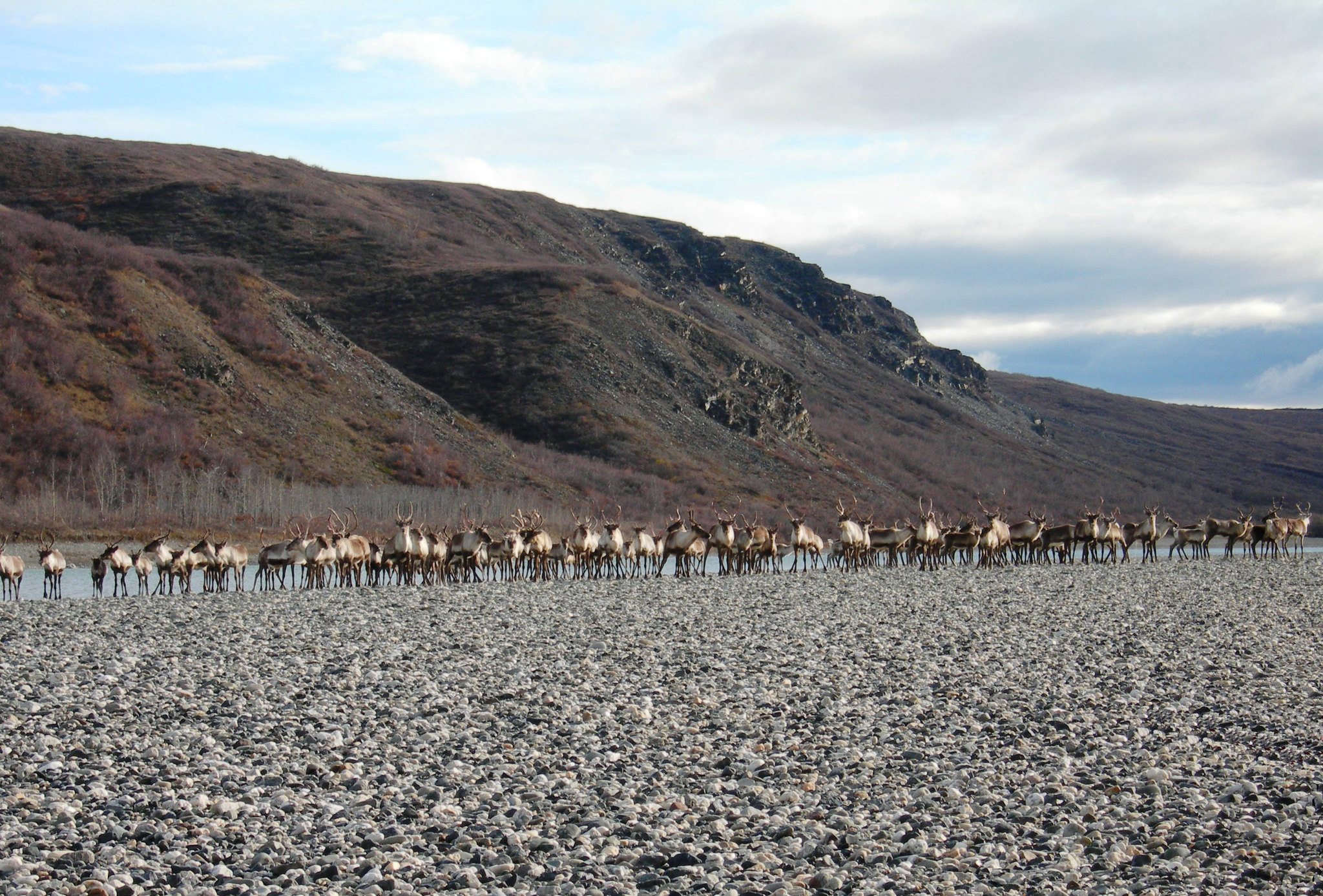Western Arctic Caribou Herd decline continues, bringing population to a third of peak size
The herd, long Alaska's largest, numbers about 164,000 animals, about a third of its peak population in the early 2000s.

One of the world’s biggest caribou herds is continuing a long-term population slide, according to new numbers released this week by the Alaska Department of Fish and Game.
The Western Arctic Caribou Herd is down to 164,000, a decline of 24,000 from the population count made last year and roughly a third of the peak herd populations last reached in the early 2000s, according to the numbers.
There is no obvious reason for the past year’s decline, but it is not surprising, said Alex Hansen, a Kotzebue-based Alaska Department of Fish and Game biologist who is part of the team monitoring the herd. “We’ve seen, for the last number of years, reduced cow survival,” Hansen said.
The Western Arctic Caribou Herd is, in most years, the largest of Alaska’s 32 herds. Its range covers a nearly California-sized swath across Northwest Alaska that stretches from the North Slope in the summer to the eastern Seward Peninsula in the winter.
The annual census is the product of radio tracking, on-site North Slope observations and high-resolution aerial photography that allows biologists to count and categorize individual animals. The work is meticulous, Hansen said. “If we report a number, it’s a good estimate,” he said, noting that the population figures reported include a range known as a confidence interval.
Caribou herds are known to fluctuate widely in size, and the Western Arctic herd’s record since 1970 shows it is no exception. Since then, the herd has veered between a low of about 75,000 in the late 1970s to a high of nearly 500,000 in 2003.
The herd is important to Indigenous villagers in northern Alaska who depend on the animals for food and for cultural traditions. That potentially makes the herd’s decline a problem.
“I can’t say that it isn’t concerning. It depends on what your needs and purposes in life are,” Hansen said. There has been local concern expressed about the caribou’s present population, he said, “because folks rely on them.”
The herd has been at the center of a debate over the proposed Ambler Mining District Industrial Road, a 211-miles project that would cut through the Brooks Range foothills — and a large swatch of the caribou’s range — to connect an isolated copper-mining district with Alaska’s existing road system.
The road, proposed by the Alaska Industrial Development and Export Authority, is needed to make mining commercially viable, argue proponents. But tribal governments and other organizations have consistently opposed the road, citing threats to the Western Arctic herd. In the past, members of the Western Arctic Caribou Herd Working Group, which comprises community residents, hunting guides, environmentalists and other interested parties, have expressed opposition.
The working group makes recommendations about hunting regulation and other management issues. It is scheduled to hold its annual meeting in December.
Caribou and reindeer populations have been declining around the circumpolar north.
The 2018 Arctic Report Card issued by the National Oceanic and Atmospheric Administration noted that the migrating populations of caribou and reindeer have declined 56 percent over the prior two decades. Only two of the cited 22 regularly monitored herds had populations at or near historic highs, and some once-large herds in Canada have collapsed almost entirely, that report said.
Arctic climate change is considered to be a likely culprit. Threats from climate change include vegetation changes and a shift in both summer and winter conditions. Through “shrubification,” plants covering tundra are transitioning from the lichen and mosses that are ideal caribou food to woody shrubs that are not, scientists have said. Warmer winters increase the frequency of dangerous rain-on-snow events, and warmer summers increase risks of disease spread, scientists say. Other threats to caribou populations come from development that has fragmented habitat, they say.
The decline of the Western Arctic herd may leave the Porcupine Caribou Herd, which has a range that straddles northeastern Alaska and northwestern Canada, as the state’s largest. The most recent census, conducted in 2017, put that herd population at between 202,000 and 235,000. The Porcupine herd has long been at the center of another development controversy: long-proposed oil drilling in the coastal plain of the Arctic National Wildlife Refuge. That coastal plain is the heart of the herd’s calving grounds.
This article has been fact-checked by Arctic Today and Polar Research and Policy Initiative, with the support of the EMIF managed by the Calouste Gulbenkian Foundation.
Disclaimer: The sole responsibility for any content supported by the European Media and Information Fund lies with the author(s) and it may not necessarily reflect the positions of the EMIF and the Fund Partners, the Calouste Gulbenkian Foundation and the European University Institute.
